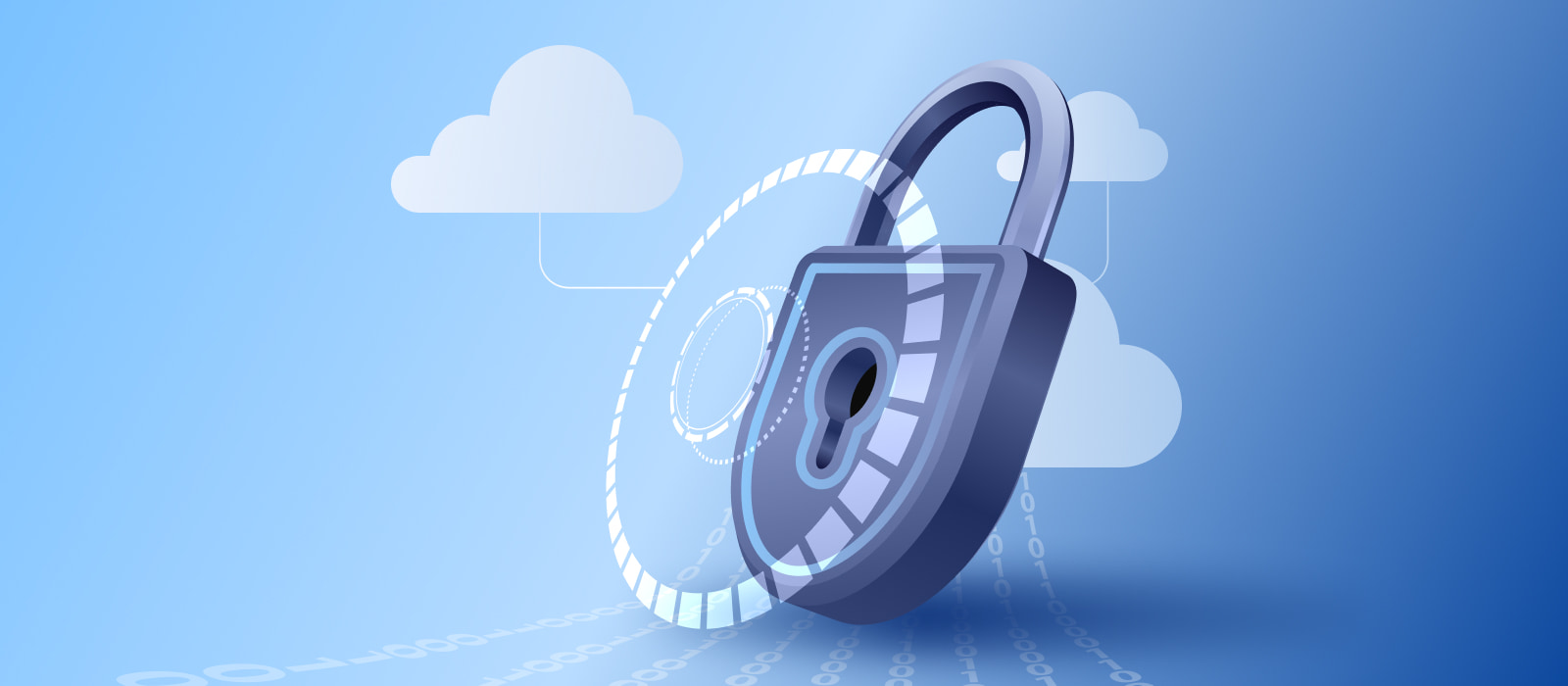Strengthening your infrastructure security is pivotal to the integrity of your business's cybersecurity framework and forms the backbone of the entire defense strategy. But what does it encompass?
Infrastructure security is all about safeguarding your organization’s foundational systems. These include computers and endpoints, networking systems, and hardware and software resources.
If infrastructure is not properly secured, organizations face the risk of unauthorized data breaches, which might lead to potential financial and reputational losses.
As per IBM’s report, the worldwide average expense of a data breach in 2023 stood at $4.45 million, marking a 15% rise in three years. The study further reveals that 51% of organizations intend to ramp up their security spending following a breach.
In this article, we will delve into the importance of solid infrastructure security measures and provide best practices and tips to fortify your organization’s foundational systems.
What is infrastructure security?
Infrastructure security refers to a fundamental approach aimed at safeguarding an organization’s entire technological framework. It encapsulates strategies and measures that ensure the integrity, resilience, and reliability of all the systems and networks forming the backbone of an enterprise’s operations.
There are two main goals of infrastructure security.
First, it seeks to enhance security protocols and the overall security posture of an organization. Second, it strives to reduce potential downtimes and the subsequent risks, such as customer attrition, reputational damage, and escalating compliance-related expenses.
What are the 4 levels of infrastructure security?
![]()
The four levels of infrastructure security are network, physical, application, and data.
Let’s take a closer look at each.
Network level
A firewall often stands as the first line of defense in corporate network infrastructure security, establishing a shield between your business’s secure network and potential threats.
Network infrastructure security aims to protect data as it journeys into, out of, and throughout the network. This process covers everything from traffic encryption to the management of firewalls.
Proper authentication and identification systems also play a crucial role in this level. Furthermore, multi-factor authentication (MFA) fortifies network defenses, demanding multiple verification processes before granting access to network assets.
Physical level
Physical infrastructure security is equally important as network security. It includes elements such as fencing, surveillance cameras, backup generators, and secured doors.
While cybersecurity protects online assets, it doesn’t defend against physical theft, vandalism, or natural disasters. Therefore, a comprehensive physical security strategy should encompass data recovery protocols, ideally utilizing offsite backups located in multiple geographic areas.
Application level
Safeguarding applications involves implementing measures against potential threats like SQL injections targeting databases and reinforcing applications to withstand unauthorized interventions.
As for the preventative measures, these include ensuring regular patching, incorporating API authentication and authorization mechanisms, conducting regular security tests, and implementing strict input validation.
Data level
Data-level infrastructure security and cloud infrastructure security focuses on safeguarding the integrity, confidentiality, and availability of data, irrespective of its state — whether at rest, in transit, or being actively used.
At this level, strategies encompass encryption techniques, access controls, data masking, and tokenization to ensure that unauthorized entities cannot access or manipulate sensitive information.
Dive deep into your data’s potential with PixelPlex’s data analytics services. Discover, analyze, and innovate with data-driven insights
What is the value of robust infrastructure security?
Naturally, the primary benefit of infrastructure security lies in its ability to protect your organization from financial losses arising from cybersecurity threats.
Along with this, a robust infrastructure security system ensures:
- Protection against cyberattacks. This includes phishing attempts, ransomware, botnets, and other forms of cybersecurity threats. Secure infrastructure protects your users and their sensitive data while maintaining hardware and software security on the network.
- Sustained business continuity. A secure infrastructure significantly reduces the risk of workflow disruption, ensuring that business operations run smoothly even in the face of potential threats.
- Damage control. In the event of a successful attack or a natural disaster, a well-secured infrastructure can limit the extent of damage, ensuring quicker recovery and minimized damage.
- Improved brand image. Security breaches can not only lead to financial losses but also negatively impact a brand’s reputation. A strong infrastructure security contributes to customer trust and the long-term success and stability of an organization.
- Enhanced compliance and legal standing. Resilient infrastructure security assists in adhering to various regulatory compliances and legal requirements, reducing the risk of legal repercussions and penalties. Compliance with industry standards and regulations also builds trust with stakeholders and customers, showcasing the organization’s commitment to protecting sensitive information.
Explore the most prominent API security practices and tools
Top 12 best practices for ensuring infrastructure security. PixelPlex’s approach
![]()
Based on our extensive experience and expertise in the field, our research and development consulting team identified the top twelve infrastructure security best practices that an organization should consider adopting as a part of their comprehensive security strategy.
Let’s explore each IT infrastructure security measure in detail.
1. Establish security compliance standards
With clear standards in place, organizations can maintain a consistent approach to network infrastructure security across all departments and functions, ensuring no weak links in the security chain.
Ensure that all security policies, procedures, and controls are thoroughly documented. It’s also crucial to make sure that all your company’s employees, not just IT teams, are aware of the compliance standards.
Furthermore, many industries have a specific set of regulations, such as HIPAA, PCI DSS, and GDPR. Such compliance standards often encompass risk assessment and management practices, helping your organization identify potential threats and address them proactively.
2. Encrypt your business data
Always prioritize the use of data encryption as the first line of defense. The key point of IT infrastructure security is that encrypted data remains largely inaccessible and useless for hackers.
Our technology consultants also recommend implementing virtual private networks (VPNs) as an added layer of infrastructure security. This is especially important for staff members who might require remote access to confidential data. Additionally, using multi-factor authentication in tandem with VPNs can further enhance the security of remote access points.
3. Regularly create backup copies
Backup copies that duplicate data, applications, and configurations are essential components in helping maintain infrastructure security. They serve as a safety net, enabling organizations to recover lost data from incidents like accidental deletions, hardware malfunctions, or malicious ransomware attacks.
Backup copies also assist in ensuring business continuity. In the face of system failures, backups minimize downtime, enabling you to maintain your services and uphold customer trust. Backup is a must critical infrastructure security.
4. Implement endpoint security
Endpoint security involves the protection of all devices connected to your network, including laptops, tablets, smartphones, and IoT devices.
Endpoint security solutions often include antivirus programs, firewalls, intrusion detection systems, and endpoint detection and response (EDR) tools. These tools continuously monitor and analyze endpoint activities to detect, block, and respond to any suspicious or malicious actions.
Furthermore, endpoint security involves establishing policies and rules dictating who can access the network, from which devices, and under what circumstances.
Find out how to implement zero-trust architecture to secure your assets
5. Enable role-based access
Another important element of infrastructure security is a role-based access control (RBAC). It is a security paradigm that restricts network access based on the roles of individual users within an organization.
Instead of granting permissions to specific users, RBAC assigns permissions to specific roles, and users are then assigned to the appropriate roles. This ensures that only the necessary personnel have access to certain resources, reducing the potential risk of accidental or malicious data breaches.
By enabling role-based access, you can limit the number of users who can access specific information while simplifying overall user management.
6. Conduct regular security audits
Conduct regular cyber security infrastructure audits to identify potential weaknesses and vulnerabilities that can be exploited and proactively develop strategies to mitigate them. Such security checks serve as a vital aspect for a robust infrastructure security strategy and provide you with a clear picture of your organization’s security posture.
What’s more, regular security checks help ensure compliance with your industry regulations and optimize infrastructure security investments.
7. Develop robust firewalls and intrusion detection systems
Firewalls act as barriers between trusted internal networks and potentially harmful external networks. They filter incoming and outgoing traffic based on predefined security policies, blocking or allowing data packets based on their source, destination, and type.
Intrusion detection systems (IDS), in turn, continuously monitor network traffic, detecting suspicious patterns and anomalies that might indicate a security breach.
By integrating infrastructure security services like firewalls and IDS, your organization will benefit from real-time threat detection and comprehensive network visibility. This integration also ensures the safeguarding of critical assets and data by mitigating the risks associated with cyber threats and vulnerabilities, thereby enhancing the overall infrastructure security.
However, keep in mind that the effectiveness of firewalls and IDS largely depends on their correct setup and configuration. A poorly set firewall poses just as much risk as having none at all. Proper implementation and regular updates are essential to ensure that these systems provide the highest level of protection against ever-evolving threats.
8. Perform security awareness training
You need to educate your employees on how to recognize and address potential threats that may occur in their daily activities. This will allow you to foster a culture of security vigilance, significantly reducing the risks of breaches resulting from human error or oversight.
Some of the key aspects of infrastructure security awareness training should include:
- Training employees to identify and report phishing attempts
- Providing guidelines on safe internet practices
- Giving instructions on how to store and manage sensitive data
- Educating staff on creating strong passwords and emphasizing regular updates
Explore the benefits of using AR/VR technologies in employee training
9. Regularly monitor network traffic
In essence, regularly monitoring network traffic is not just about ensuring network infrastructure security but also about maintaining optimal network health and performance. It’s a critical component that ensures both operational efficiency and data protection.
Regularly monitor network traffic for unusual and suspicious activities. By constantly analyzing the flow of information, you can detect potential threats and unauthorized actions in real-time, ensuring enhanced infrastructure security.
10. Conduct periodic system testing
Regular system testing is a fundamental practice to ensure that an organization’s IT systems and applications function as intended and remain secure against potential threats.
Systematic evaluation of software, hardware, and network components allows you to ensure that your systems are robust, secure, and ready to meet both current and future challenges.
Employ various testing methods, including penetration testing, functional testing, and performance testing. Our QA team also recommends implementing automated testing tools to increase efficiency, accuracy, and coverage of the testing process. Additionally, it’s essential to regularly update testing scripts to adapt to changes in system features and requirements.
11. Create an incident response plan
To respond quickly in the event of an incident, you need a clear incident response plan in place.
Some of the key elements to include in your plan are:
- Defining and classifying what constitutes an incident and setting up an incident response team
- Establishing monitoring mechanisms that will detect anomalies and threats
- Identifying specific measures that need to be taken to prevent the incident from escalating or spreading further
- Restoring affected systems and their functionality in case of an incident
- Performing post-incident analysis to draw lessons and ensure better preparedness for future incidents
By incorporating these elements into your incident response plan, you can ensure a swift, coordinated, and effective response to cybersecurity accidents, minimizing their impact on your organization and improving its overall infrastructure security posture.
12. Hire cybersecurity experts to fortify infrastructure security
In today’s digital age, where cyber threats are constantly evolving and becoming more sophisticated, having a dedicated team of cybersecurity experts is paramount for any organization aiming to maintain robust infrastructure security.
These professionals bring specialized knowledge and skills to the table, ensuring that the organization’s digital assets, data, and networks are protected against potential breaches and attacks.
Furthermore, infrastructure security services specialists will stay abreast of the latest developments in the field of cybersecurity, researching and developing new security strategies and solutions to stay ahead of emerging threats.
Whether you need specialized knowledge or a different perspective on cybersecurity, you can approach the PixelPlex team for cybersecurity consulting. With 17 years of experience in the market, we boast a diverse skillset and solid expertise in data security services and technology consulting. Our wide expertise spans various internal products, including DocFlow, a blockchain-powered document management system, and KYT, a crypto compliance and risk management platform, which showcase our ability to deliver innovative solutions across industries.
Plus, if you need extra help with security assessments, system fortification, or any DevSecOps challenges, our DevSecOps consulting company is ready to assist.
Contact us today to fortify your organization’s digital defenses and stay ahead of cyber threats.




